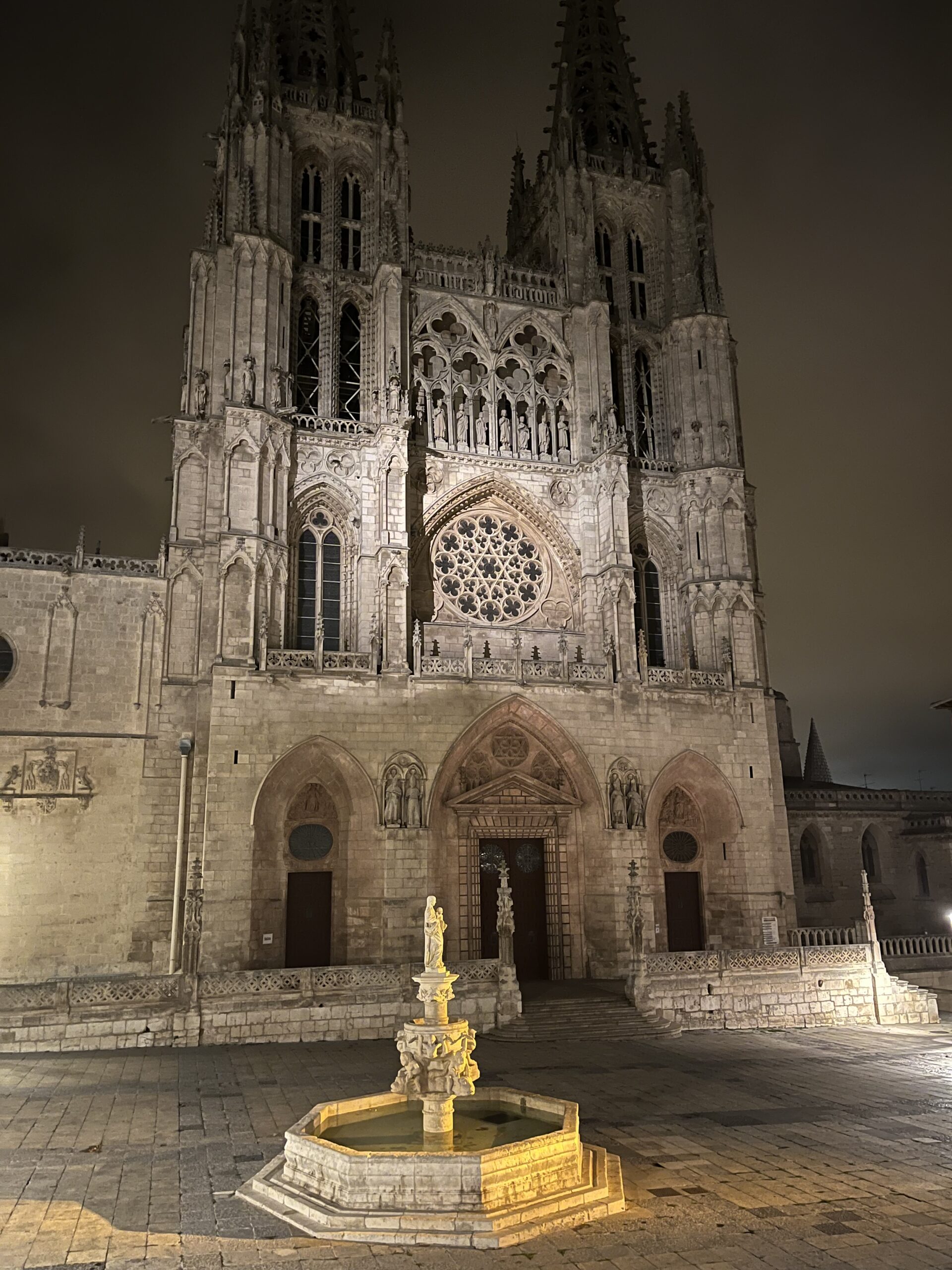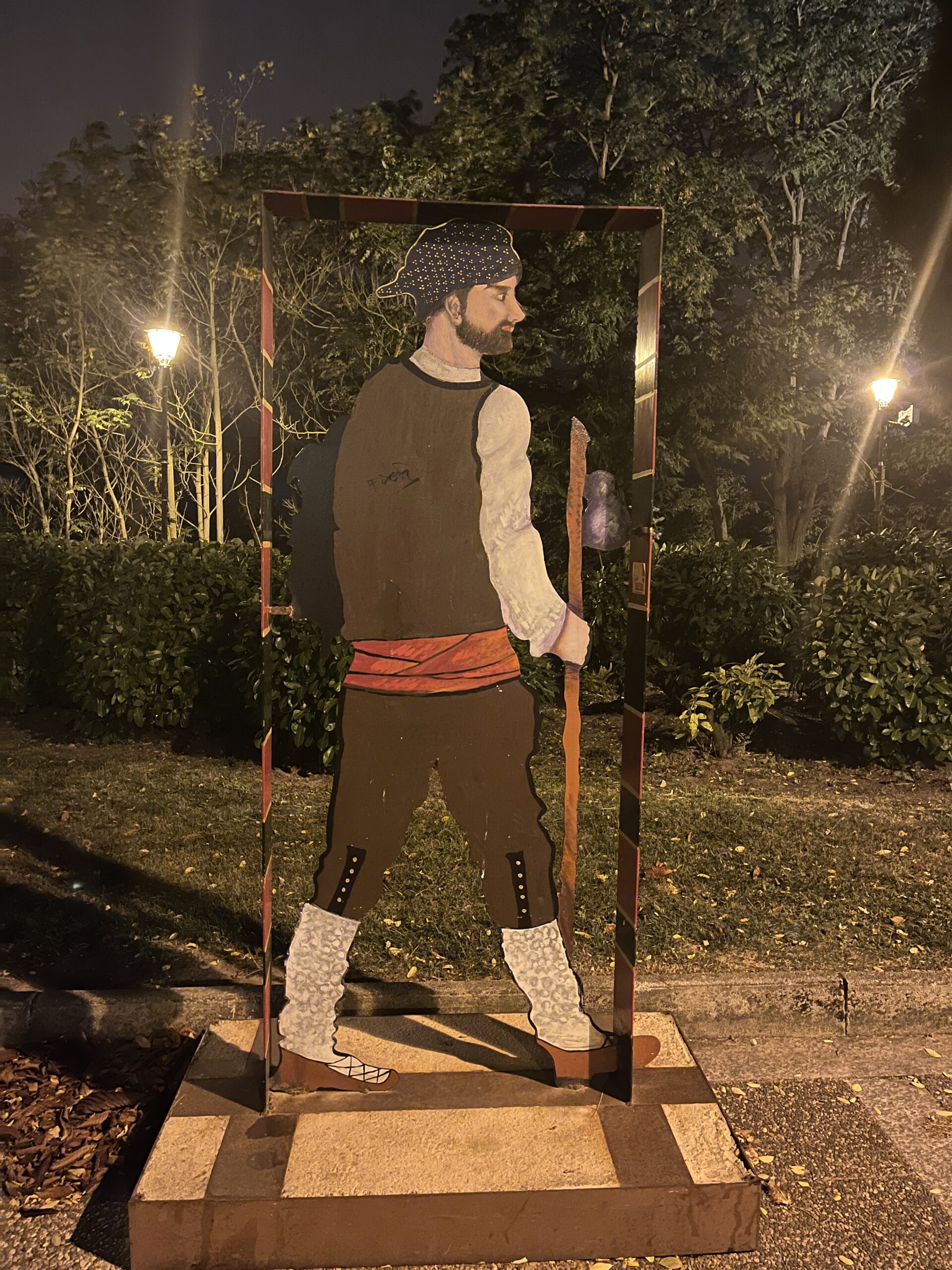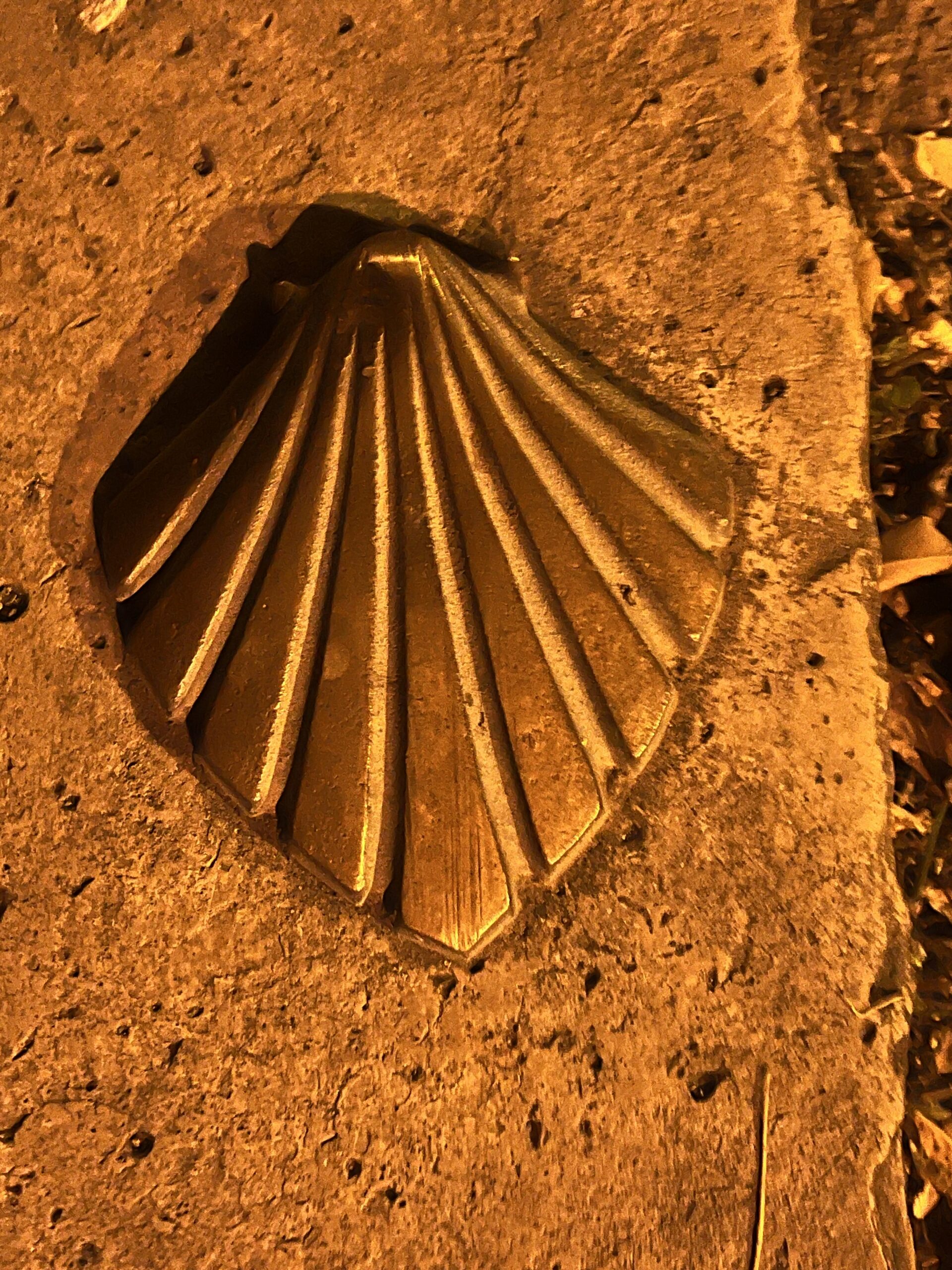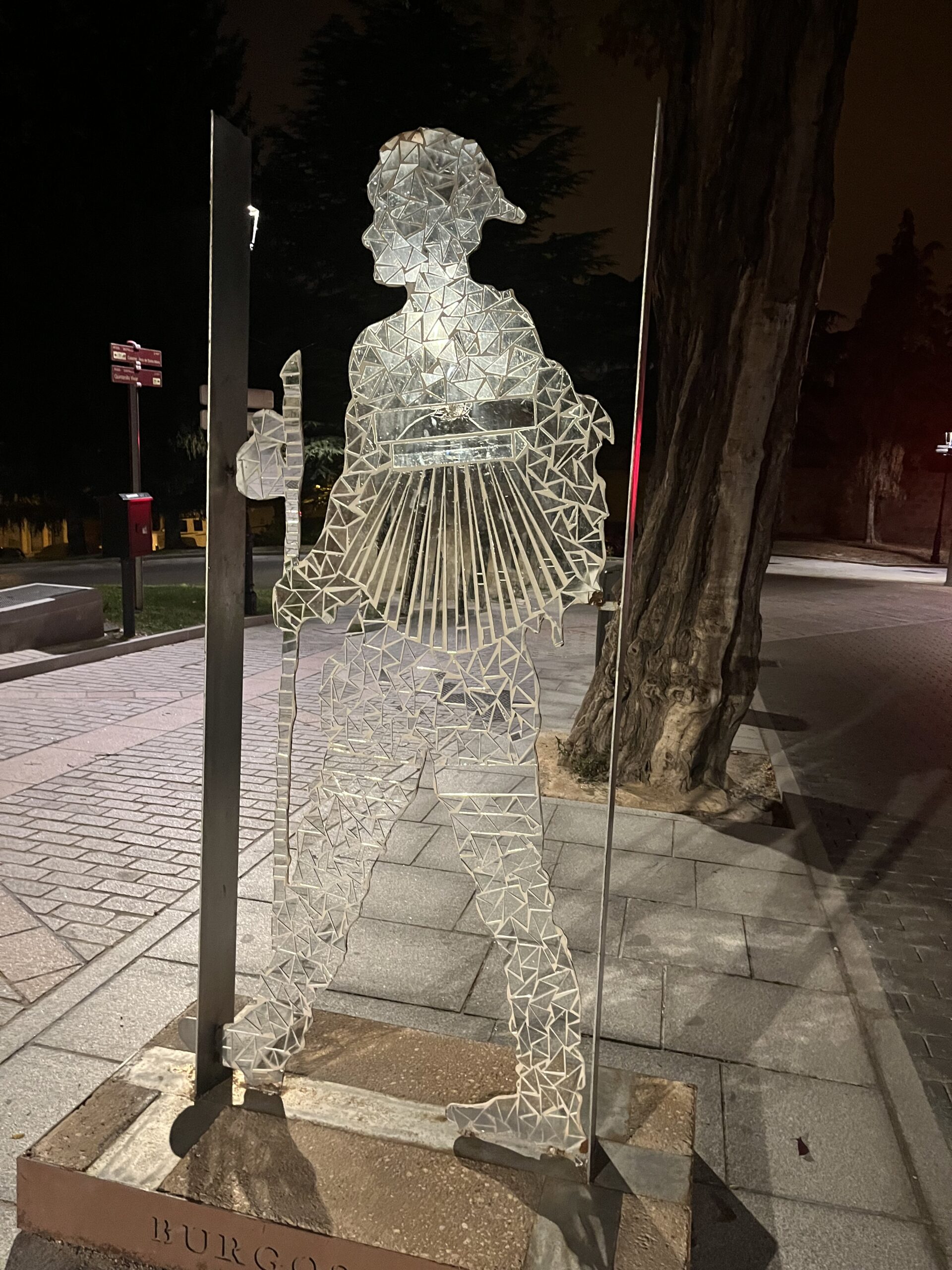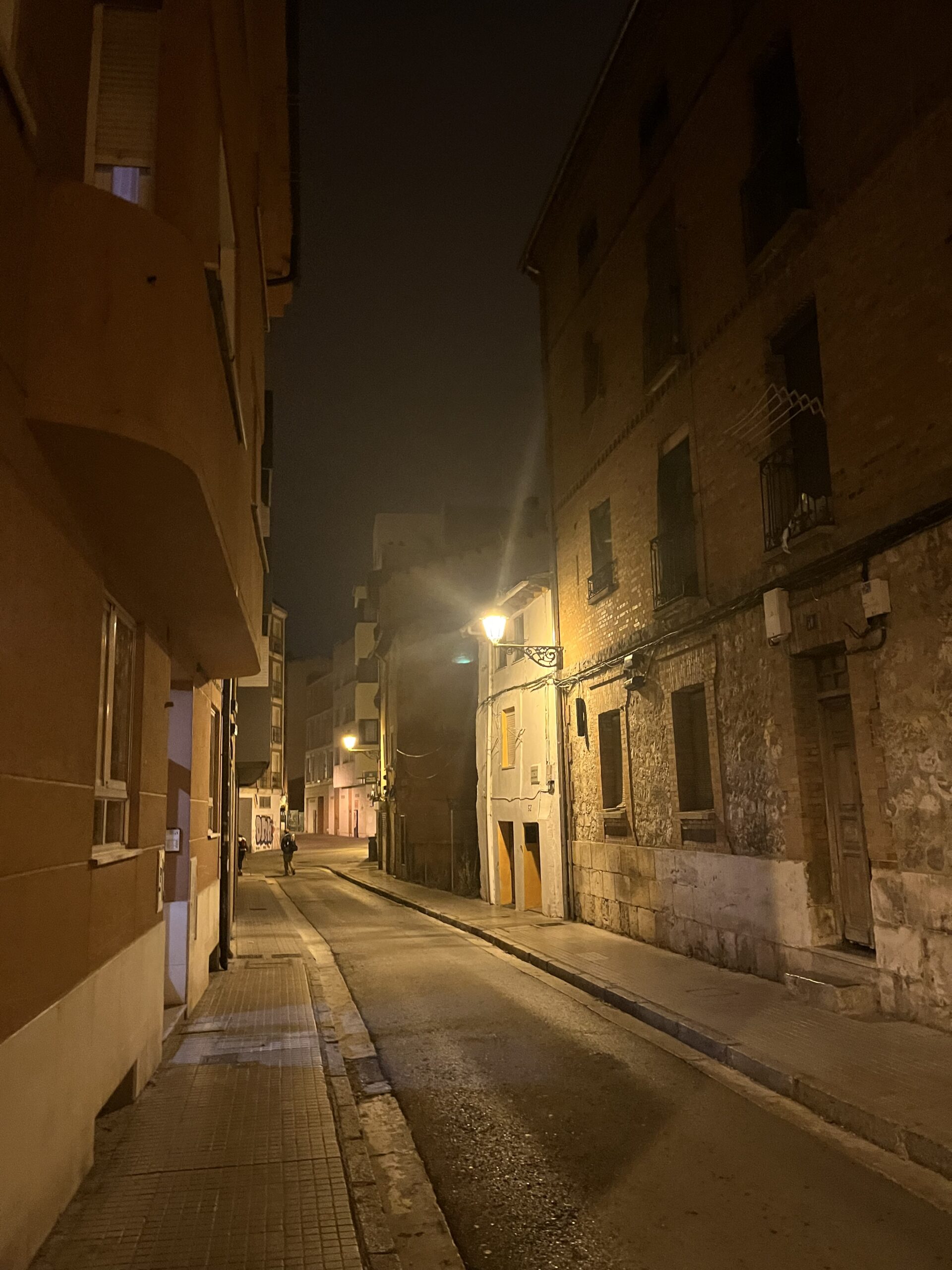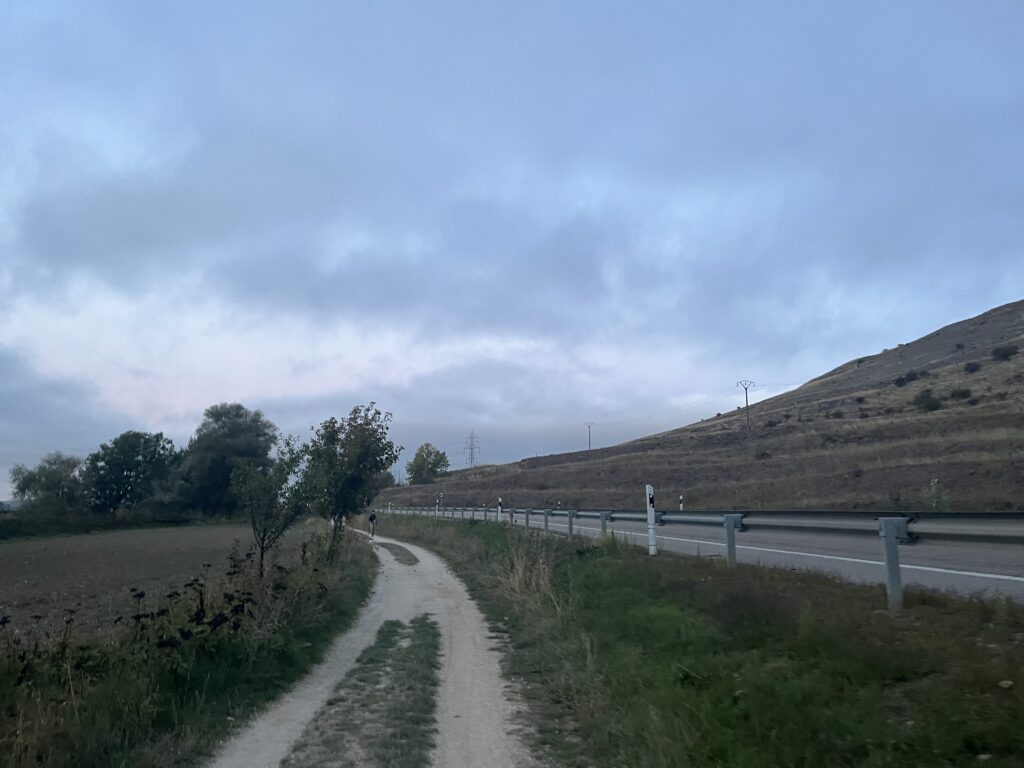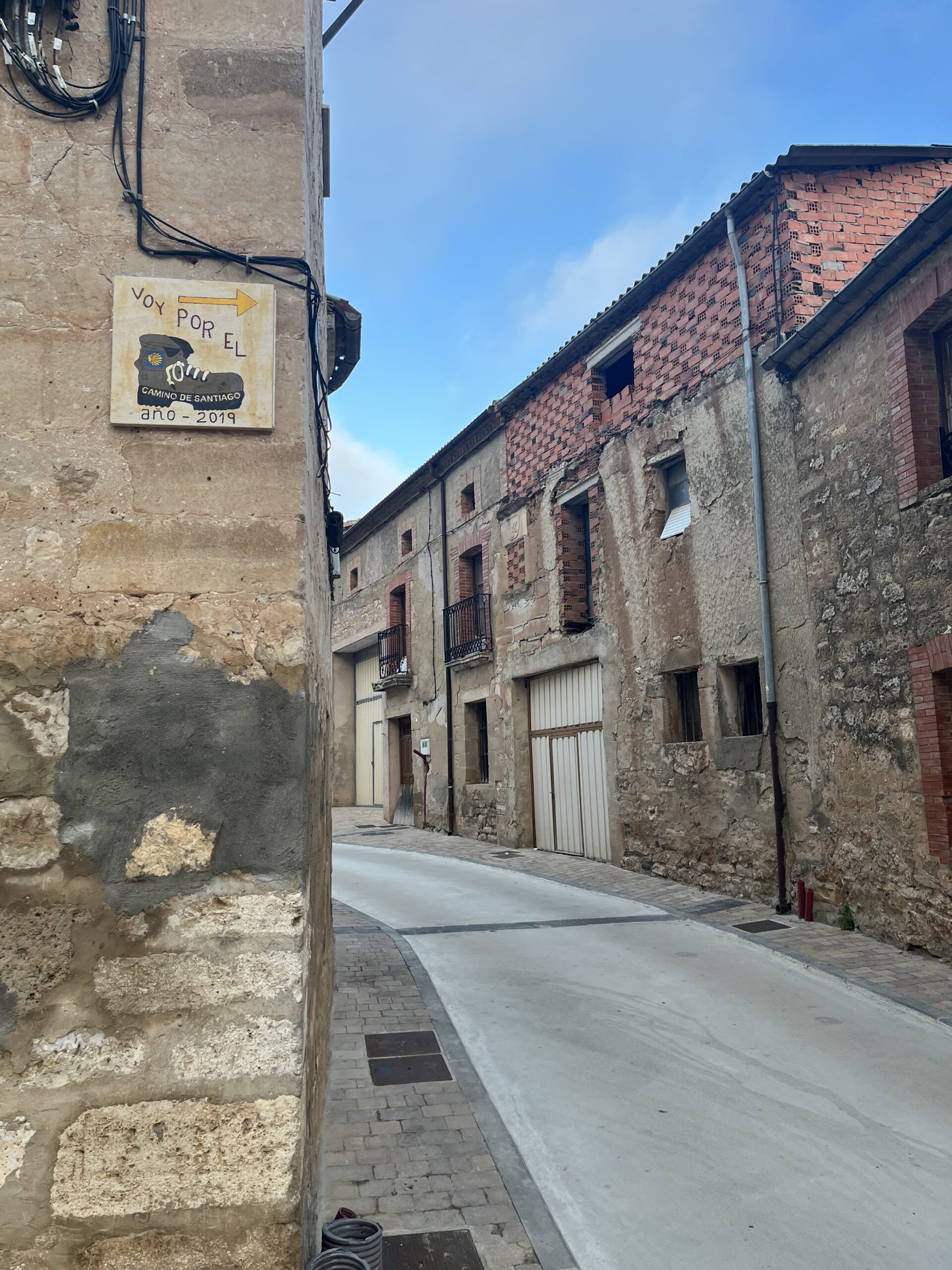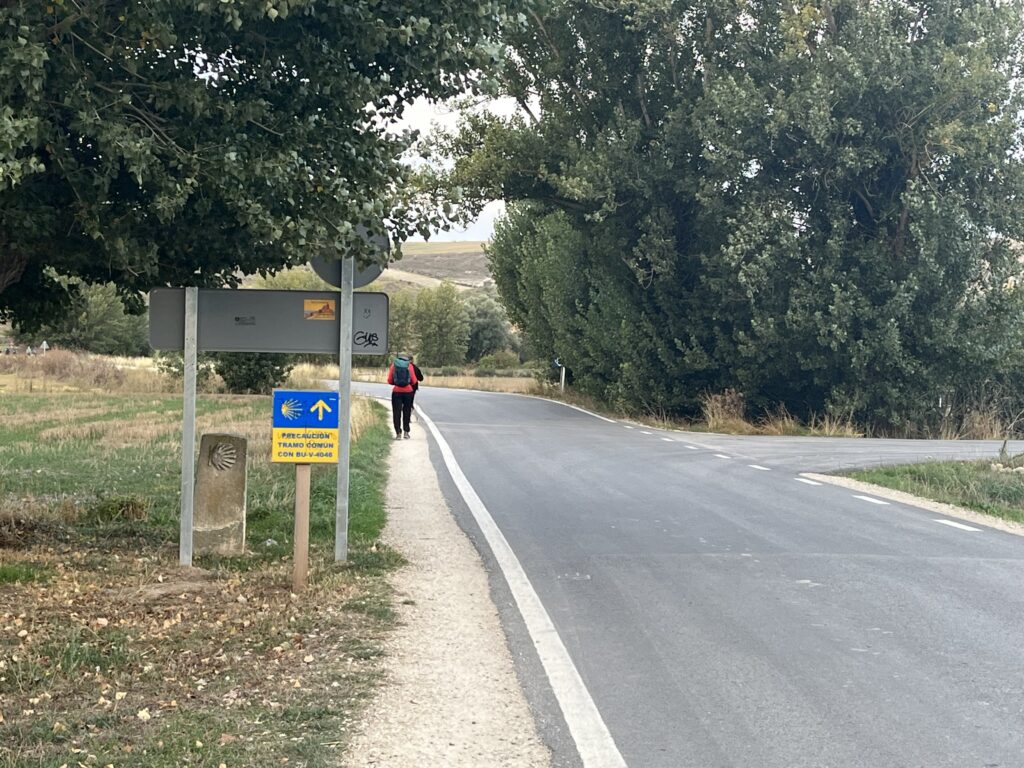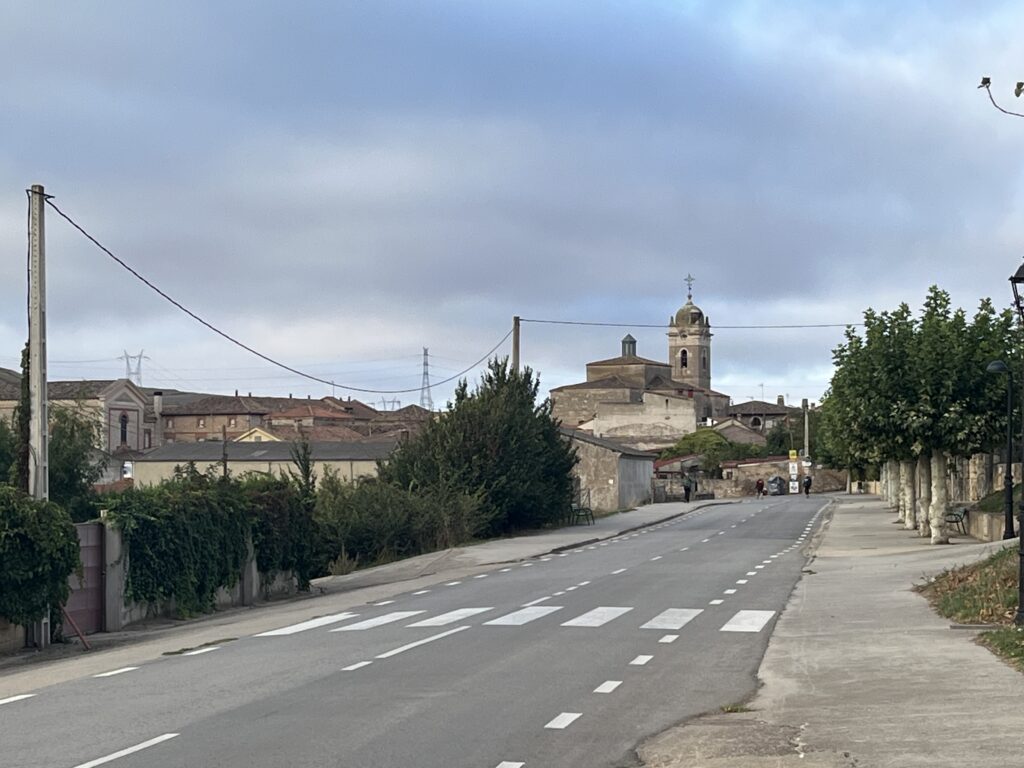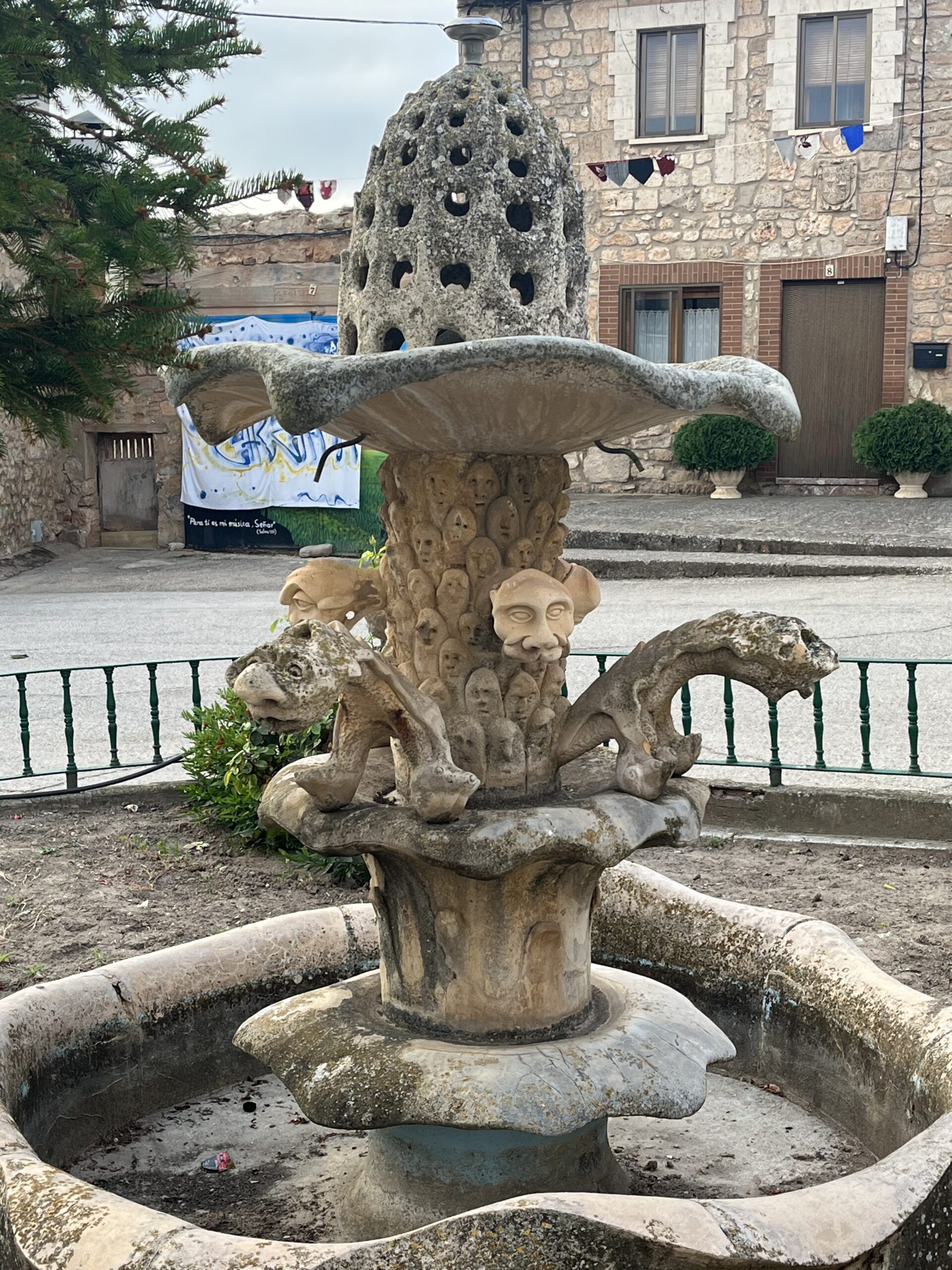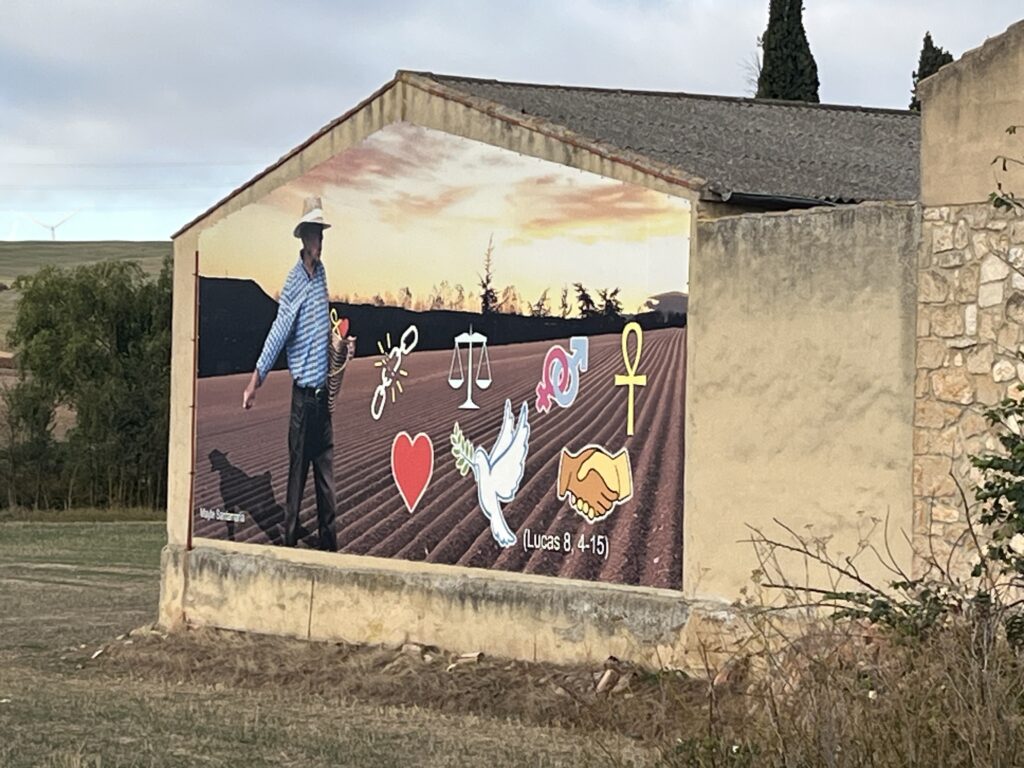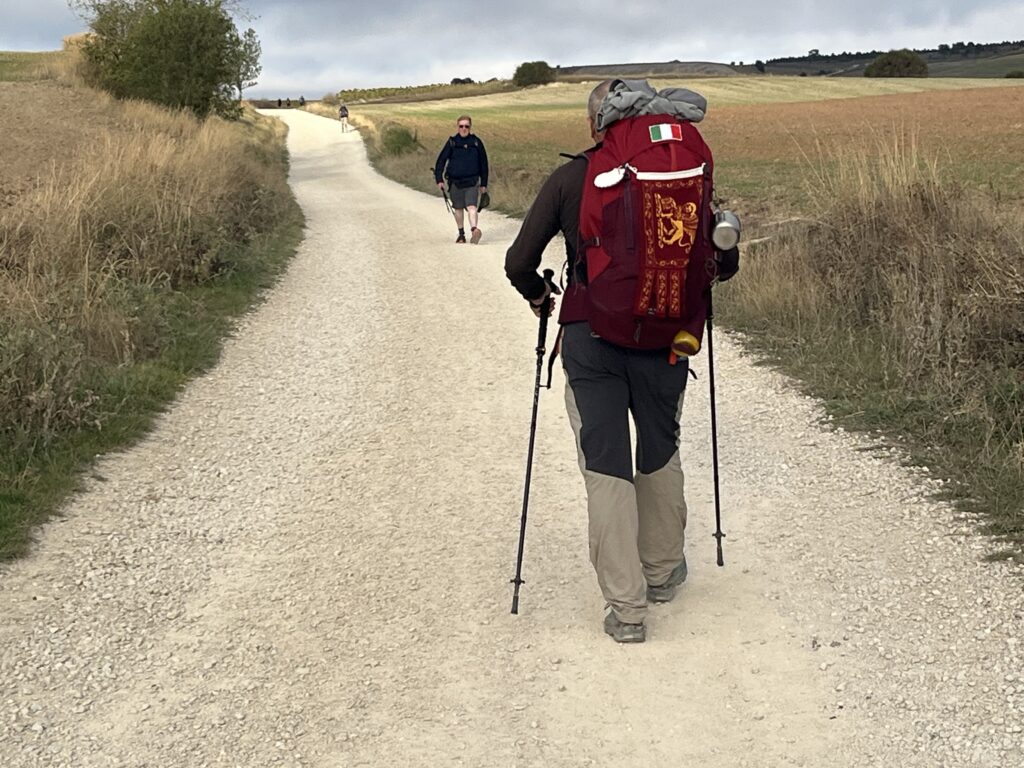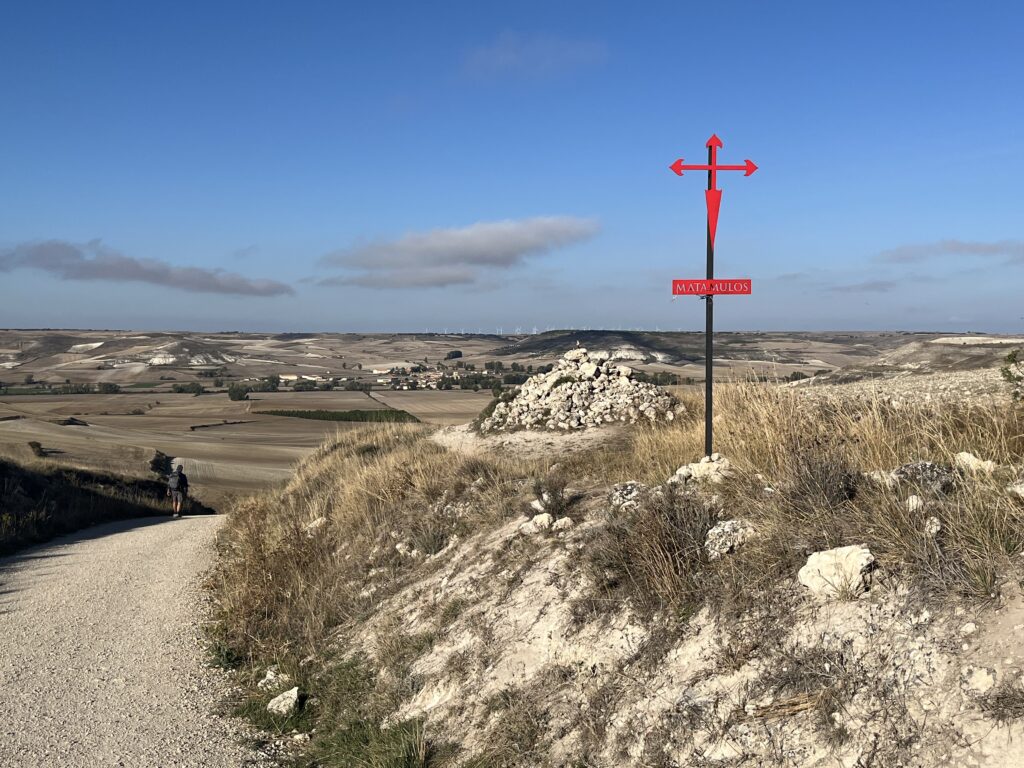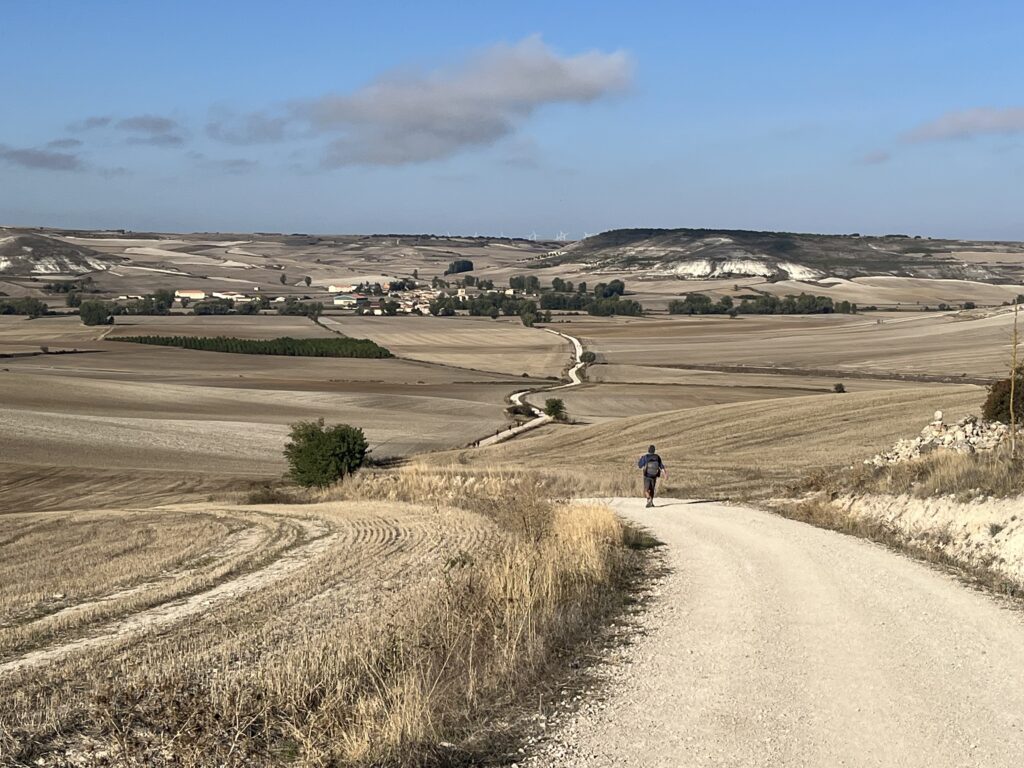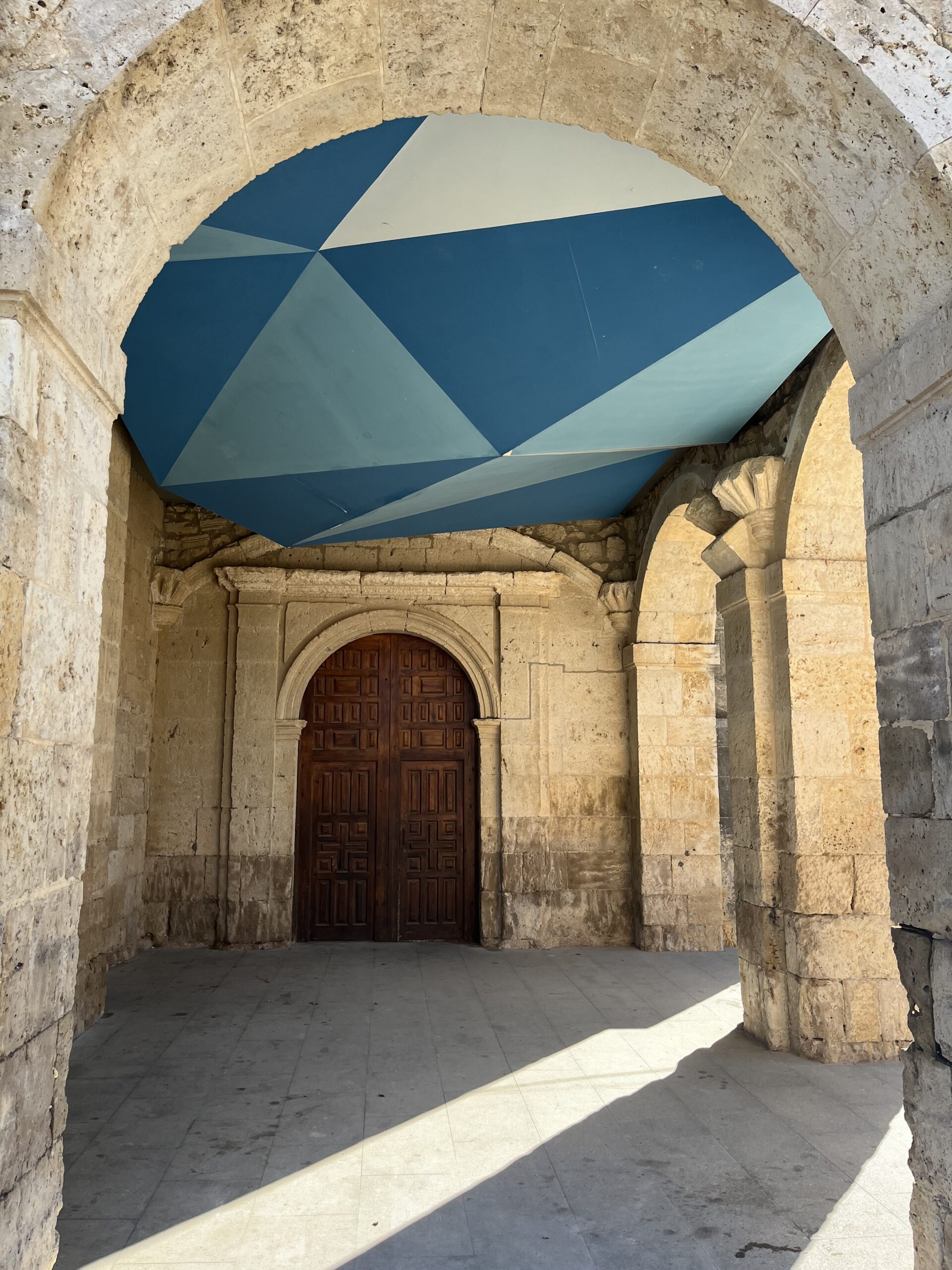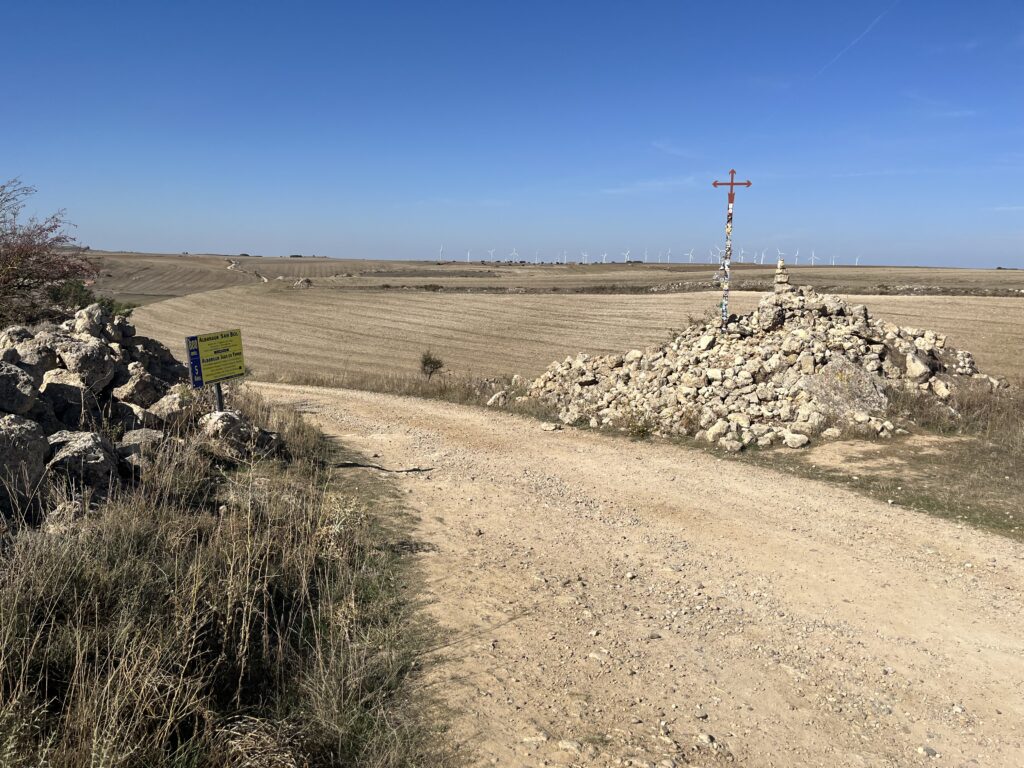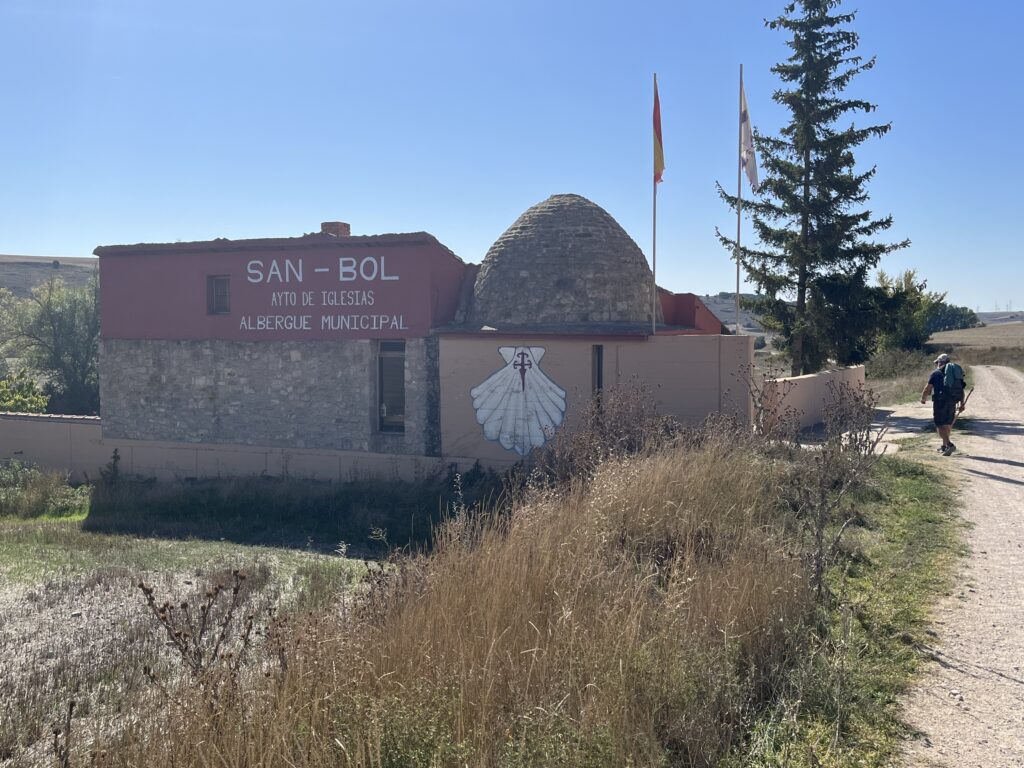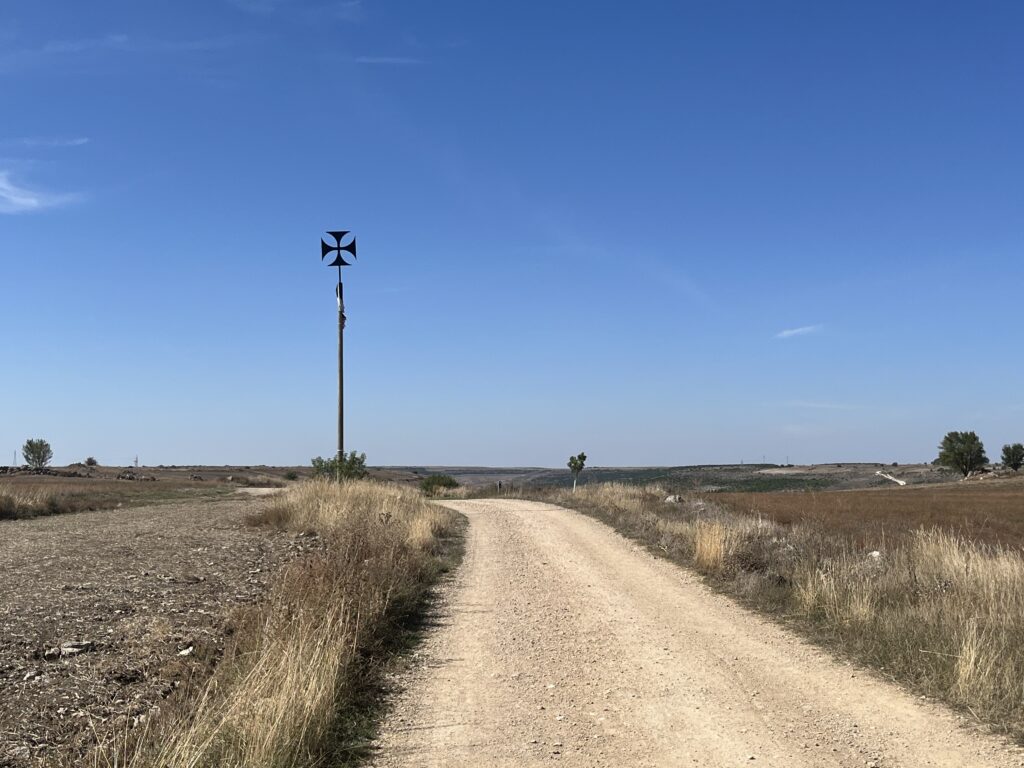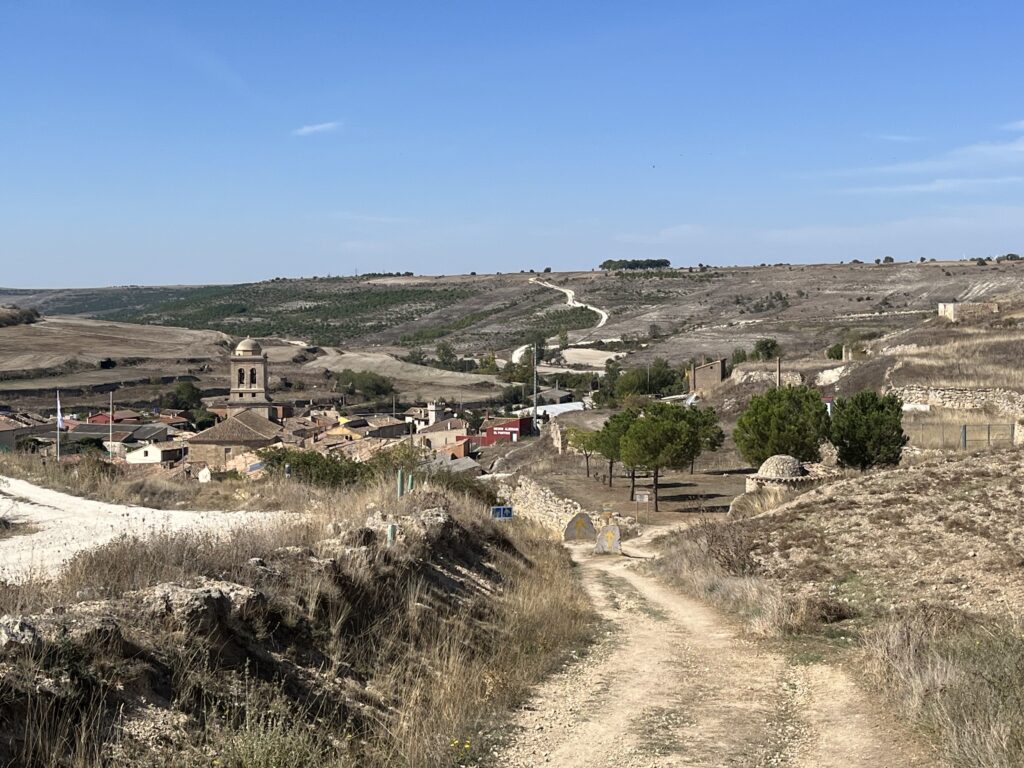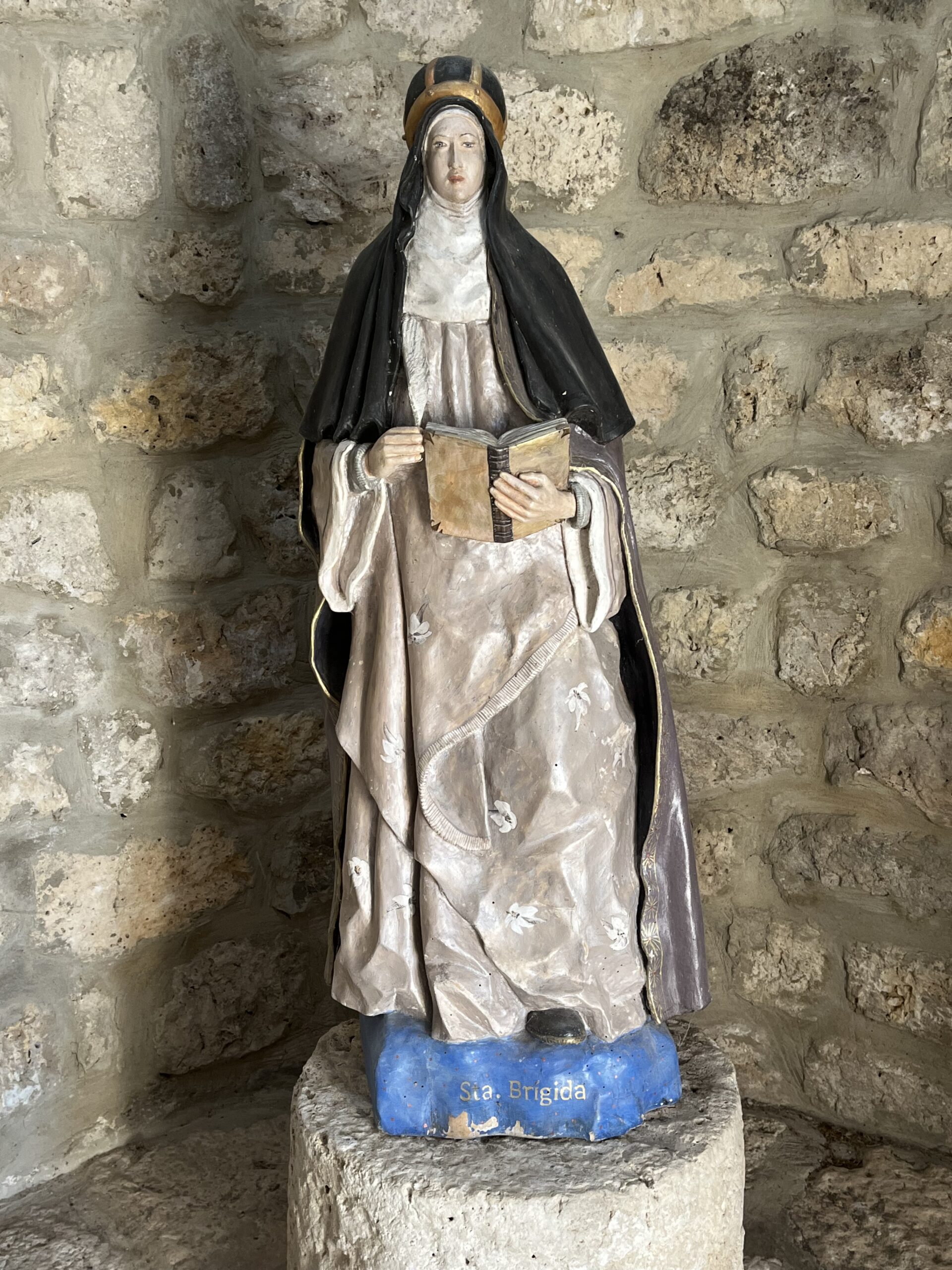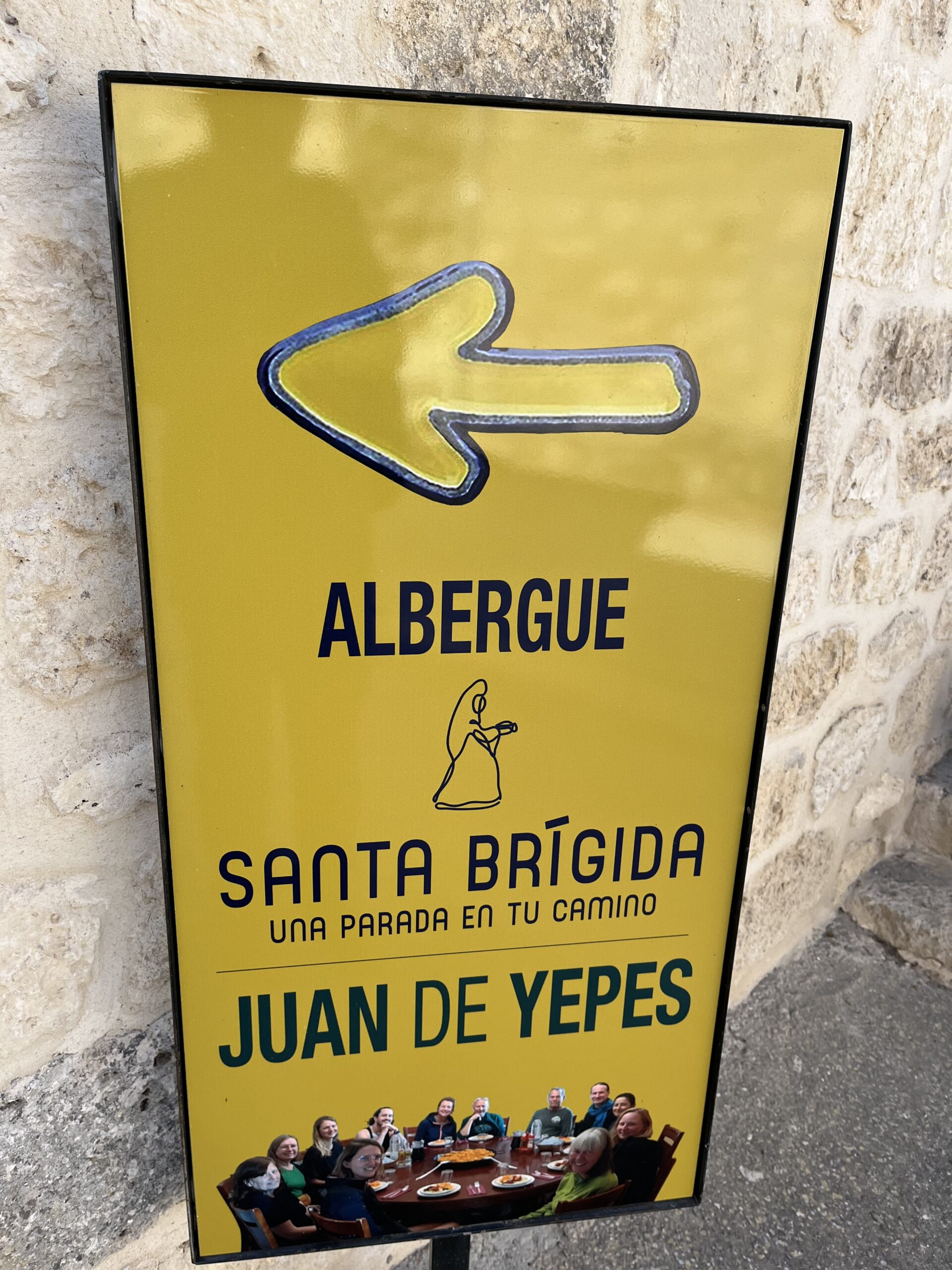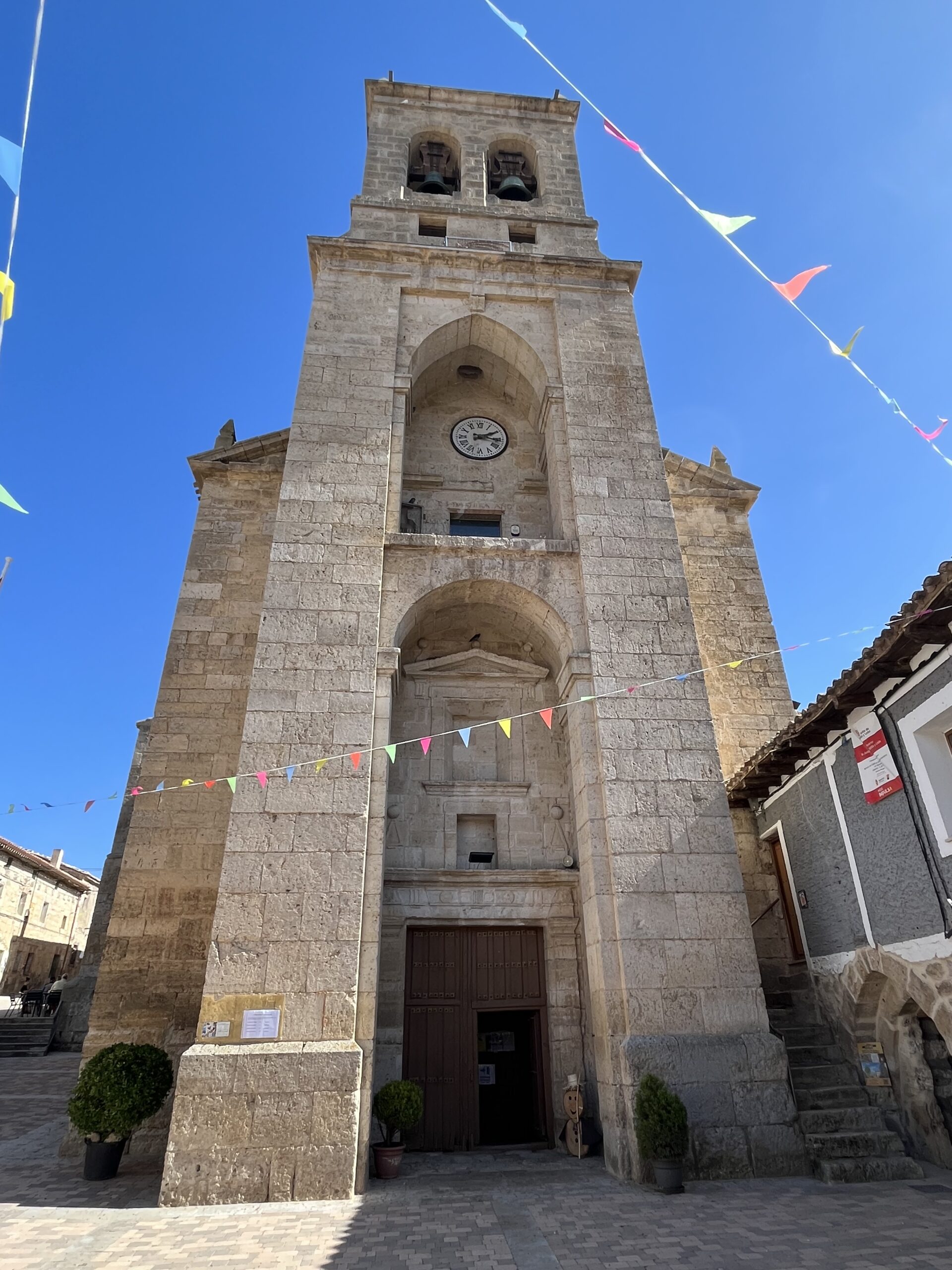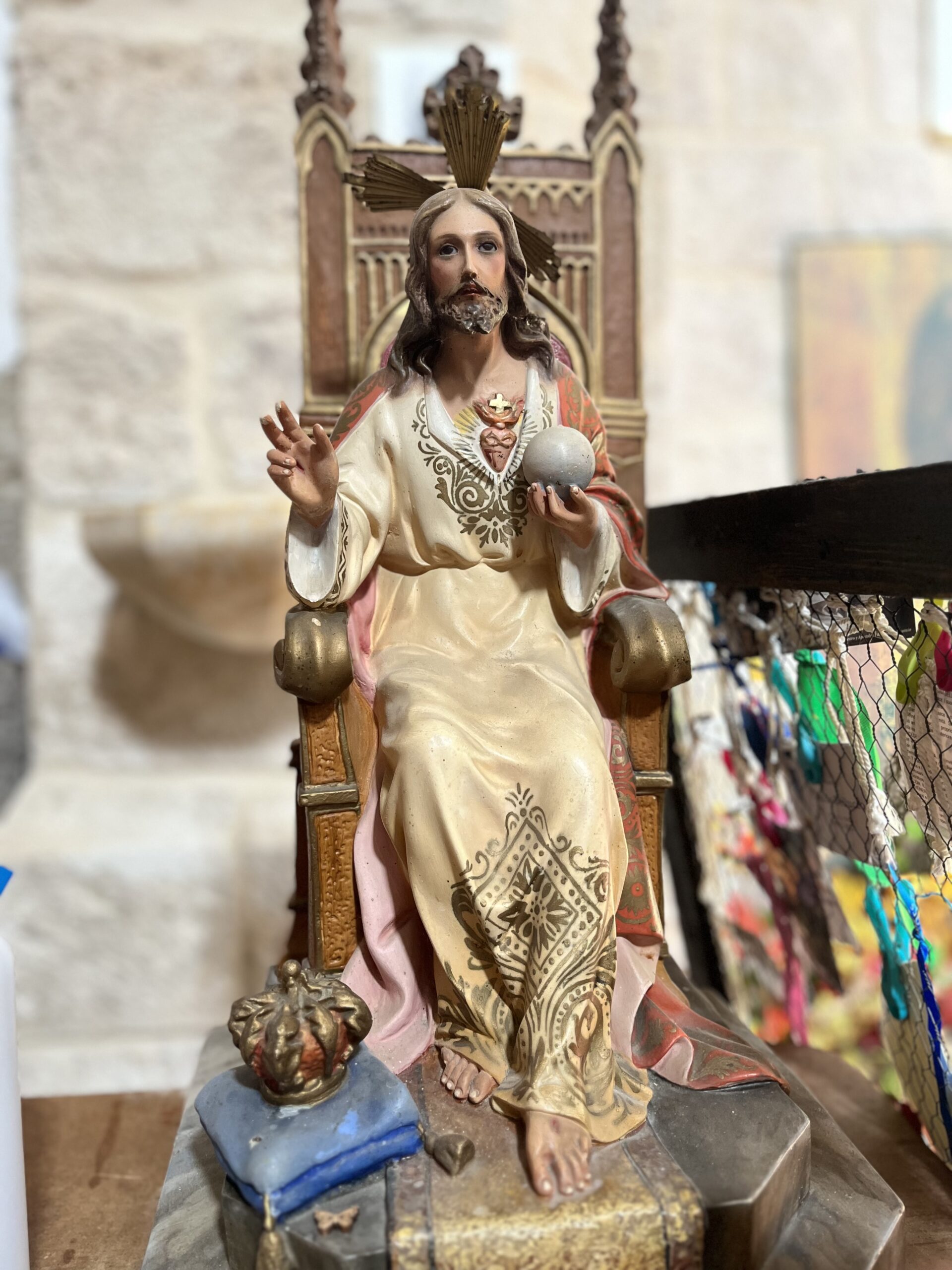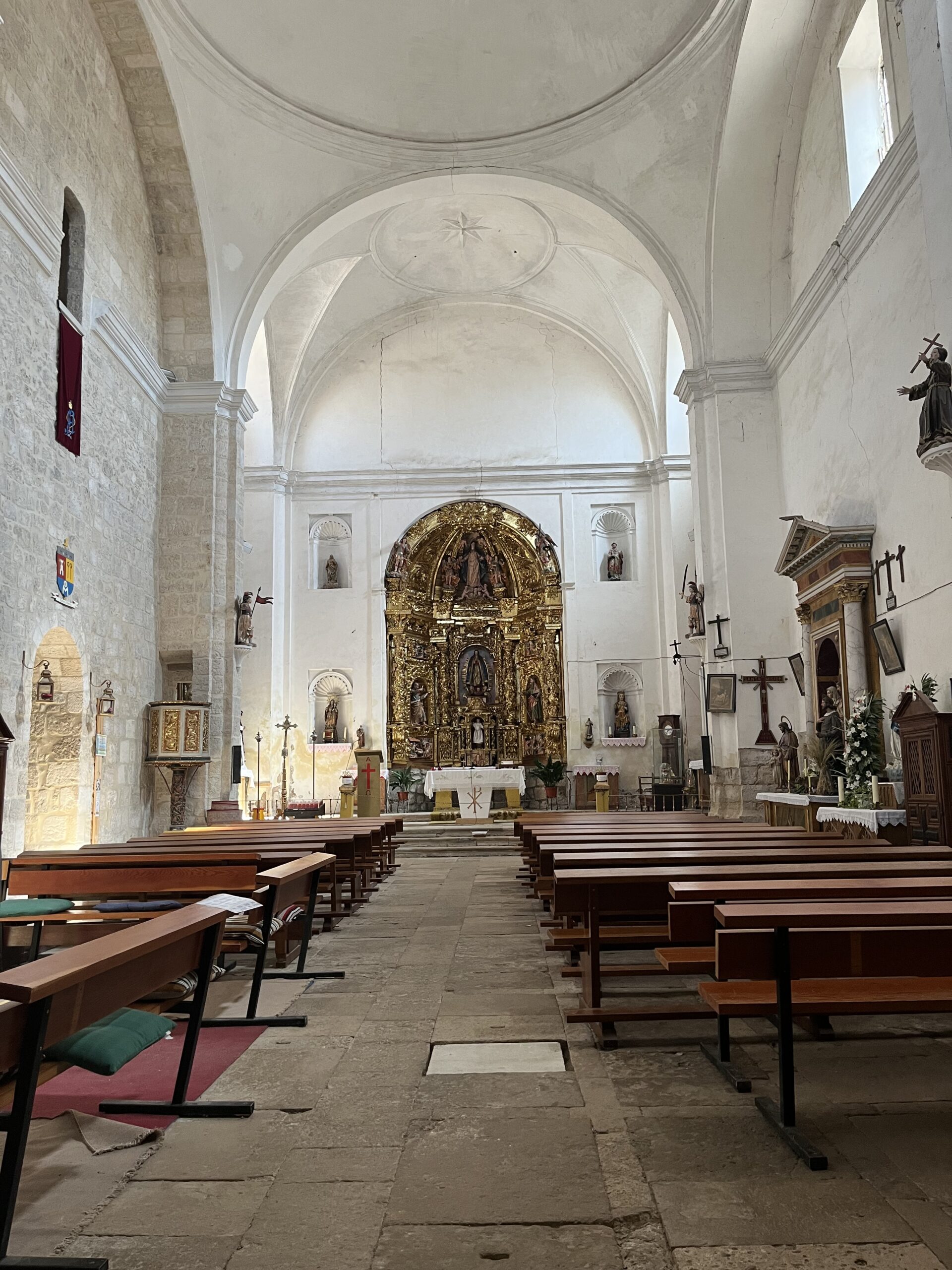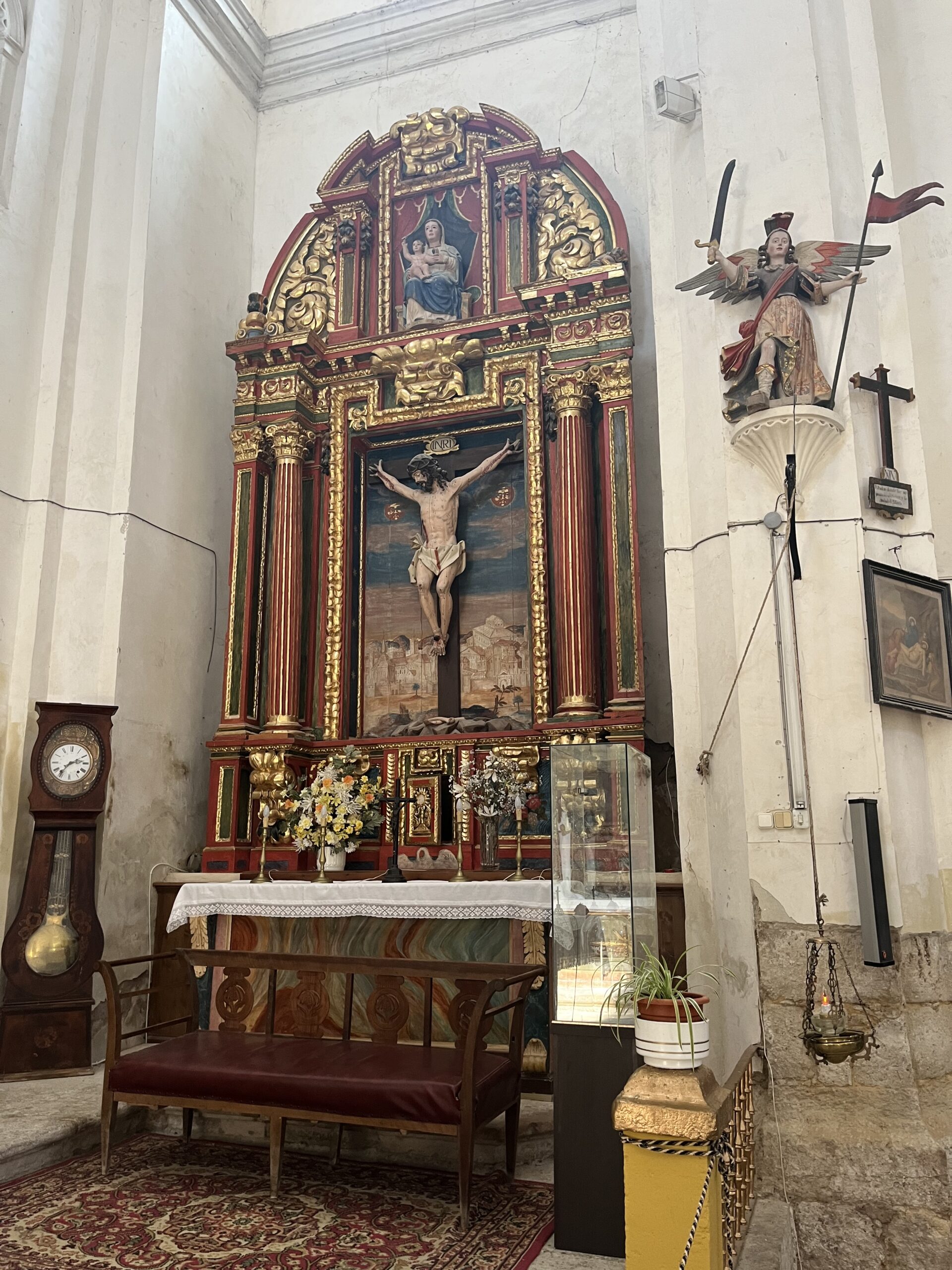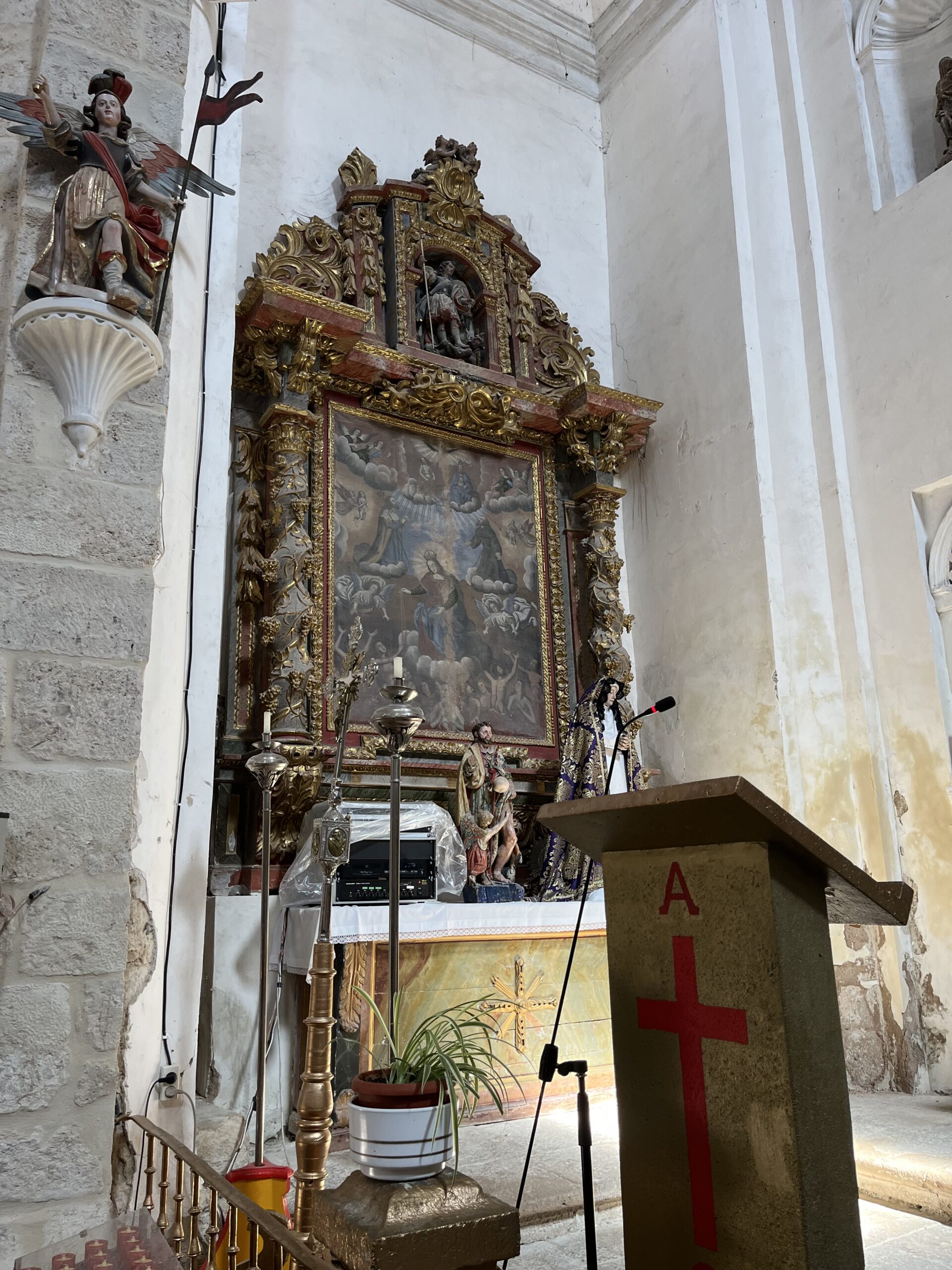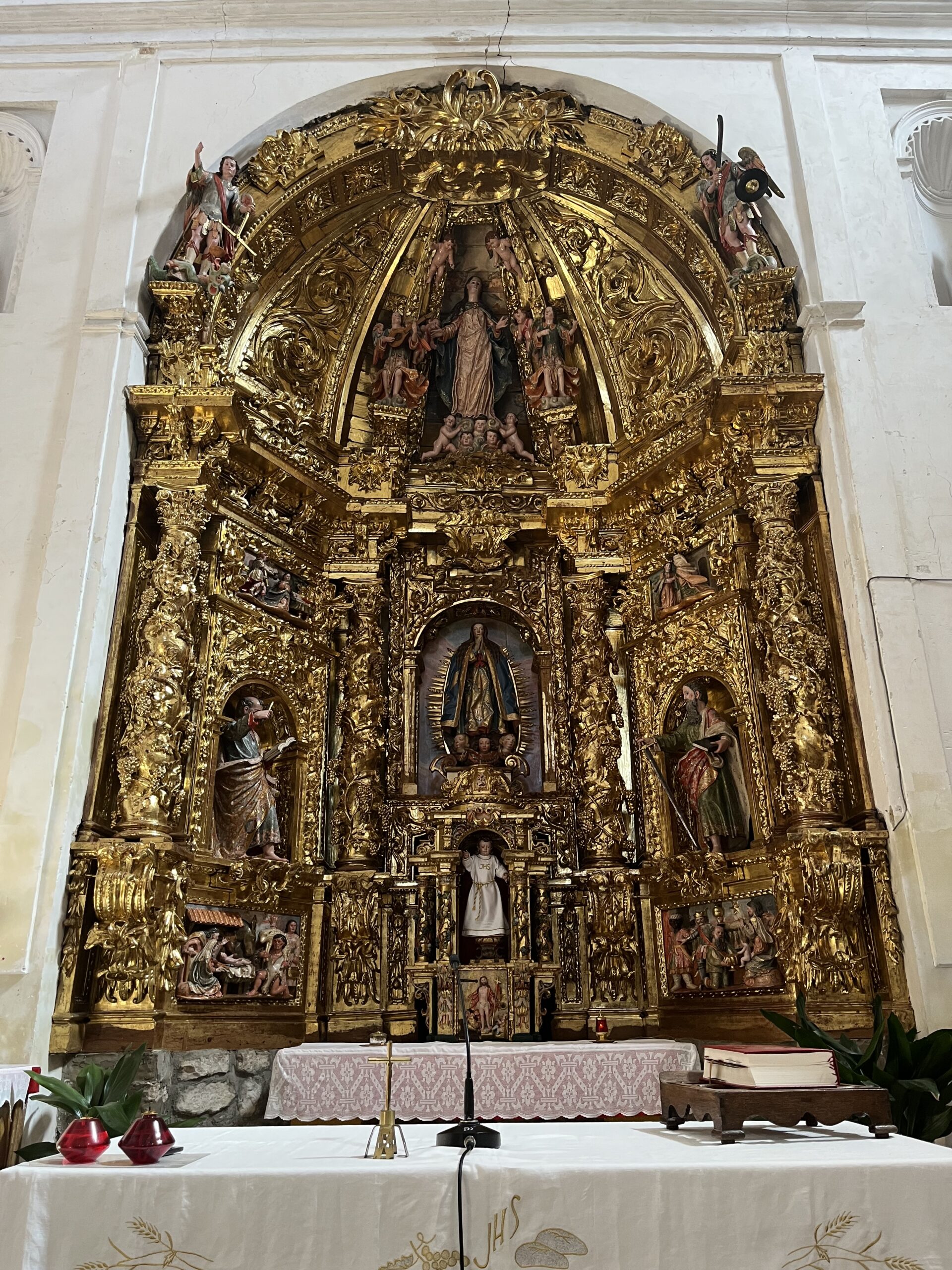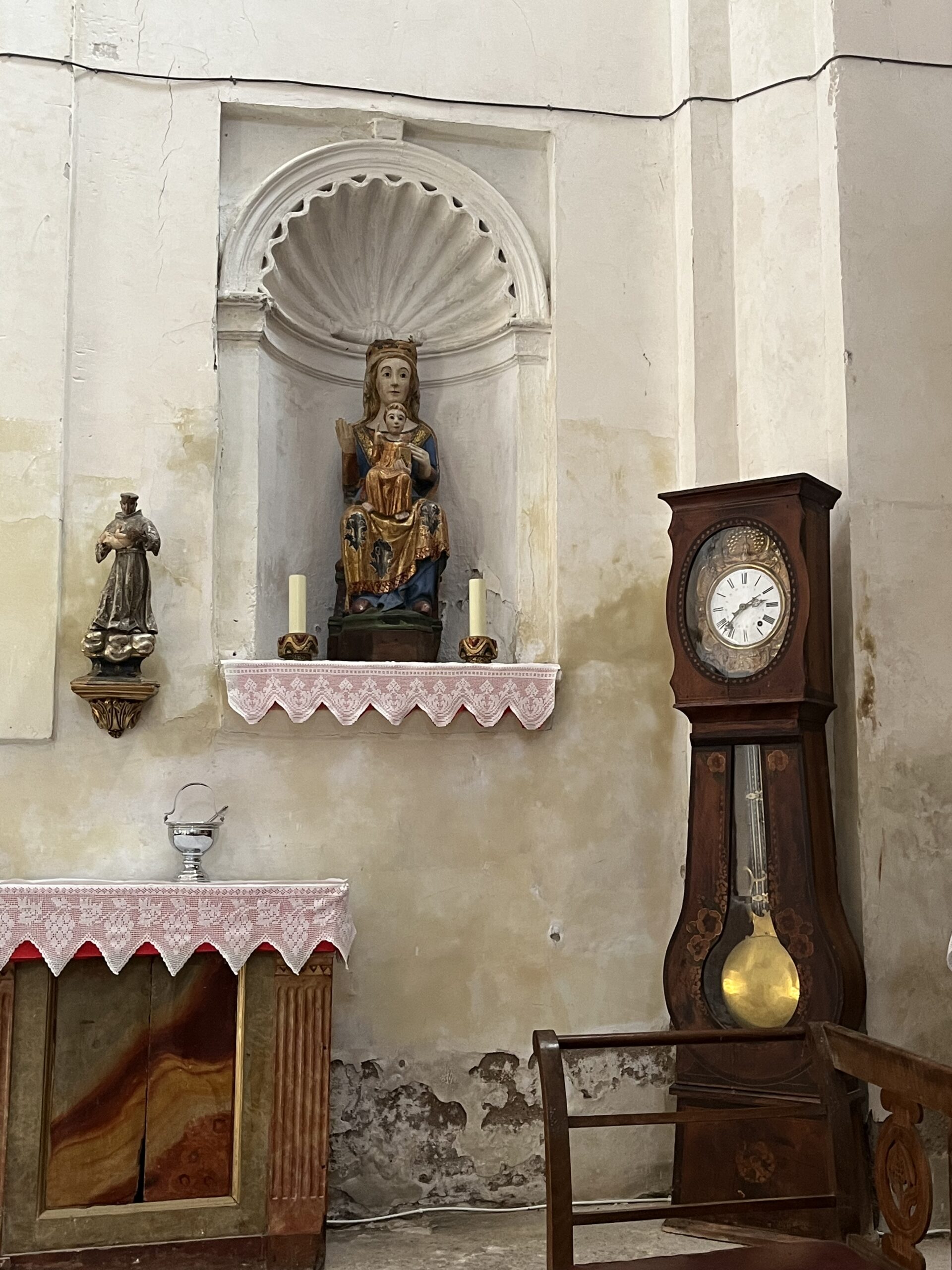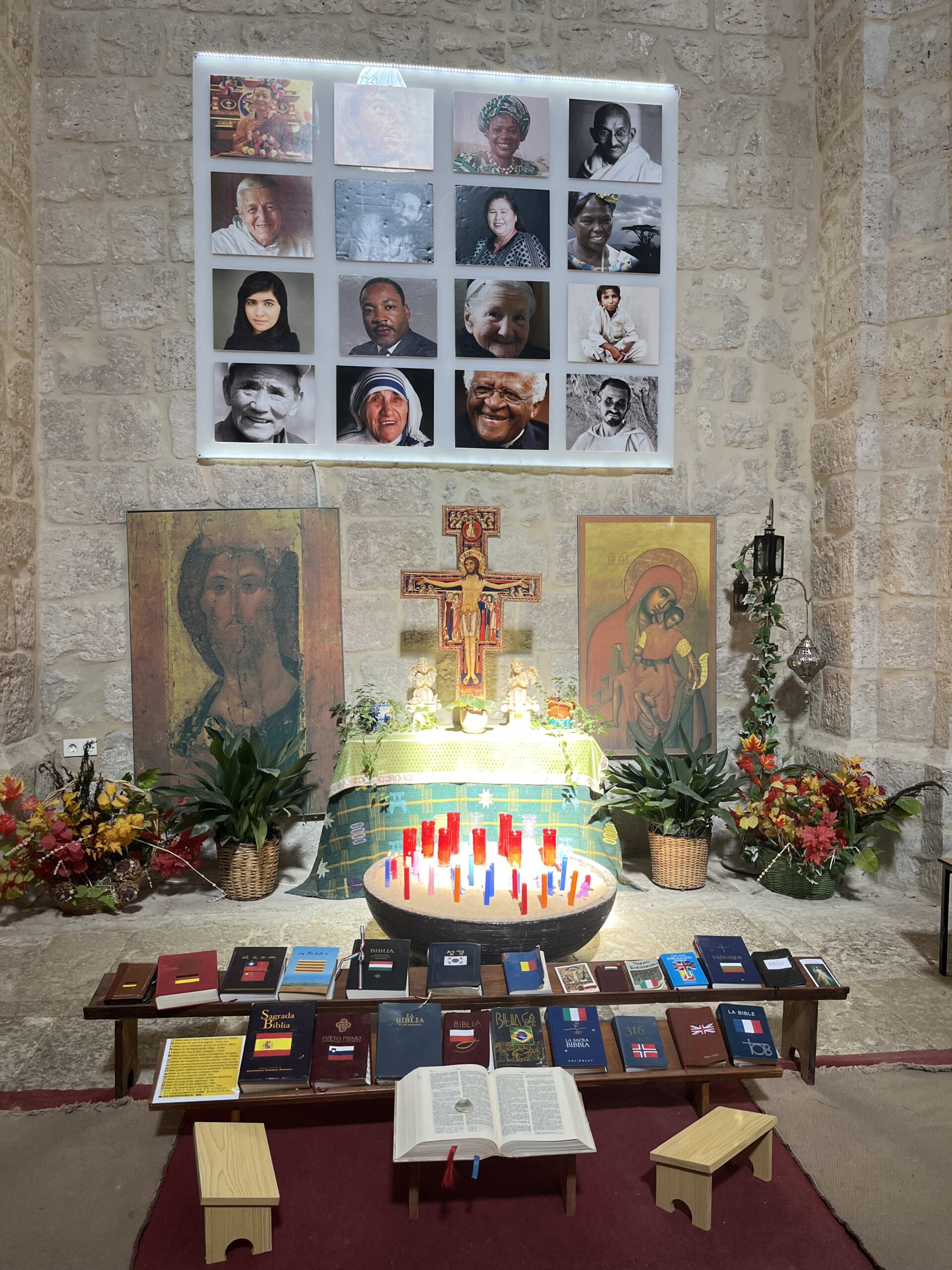Via Podiensis: Into the Meseta
On this memorial of Saint Francis of Assisi, I am mindful that the great Saint also undertook this pilgrimage back in 1214.
I was out of the hotel just after 6 AM. I had to walk back across the river and to the Cathedral to get back on the Camino route.
The way out of town was relatively straightforward, as the sidewalk was marked by big brass shells every so often. The way to breakfast, on the other hand, a little more problematic. Essentially, nothing was going to open until seven or later, and I needed to be well out of town by then.
I passed through what I presume to be one of the gates in the old city wall, but of course the modern city continued far beyond this. The Camino wound its way through some depressed neighborhoods before moving along a major street.
Eventually the Camino turned to a beautiful tree-lined walkway through and past the University. The boulevard I was following was larger than some of the rural highways I had walked. In fact, the sidewalk was wider than some of the roads.
Eventually, the Camino left the boulevard and went past a long neighborhood of modern row houses, apartments, and a modern church with a big heart painted on the front.
Eventually, the buildings ended. Then the street lights. And finally, the sidewalk. And now, I was on a gravel road heading out into the countryside. There were still plenty of light pollution, but I took out the flashlight anyway. The sky was cloudy and breezy, and I could see open fields with scattered trees to both sides.
And only now did I give up on the idea of breakfast. As I walked, the road surface alternated between gravel, dirt, and even short sections of asphalt. It was, however, perfectly level and smooth for the most part, with only a few sections being at all rough.
One point, we even crossed over a pretty major freeway. I passed, or was passed by, a scattering of pilgrims, and I recognized not a one of them.
By about 7:45, it was light enough to stow the flashlight. The sky was overcast, and while the air was warm, the breeze was cool. I’m not sure if the storm front was moving in, or I was moving into a storm front.
About 8 AM, the Camino crossed the N120 highway and then followed beside it on a gravel path. Just fifteen minutes later, I entered the village of Tardajos. It appears to be largely modern construction, although there is an older core in the very center.
I had walked 11 km, and only now found an open café for breakfast. Afterwards, I stopped by the village church, but it was locked.
The Camino left town on a narrow dirt and gravel path next to a road. In the distance, I could already see the next village.
I reached it at about 9:05 AM. I think that this place, Rabé de las Calzadas, is where I first developed my 2013 theory that in Spain, the longer the name of the town the smaller the population. While it is of course not universally true, and I could come up with a couple of counterexamples off the top of my head, it remains a pretty strong trend.
And it’s only fair to point out that this particular village is actually much larger than it first appears.
I went to visit the village church, with a stork nest in its steeple, but the doors were locked. Nevertheless, I prayed here for the intentions of the Camino before moving on. On the way out of town, there were a number of interesting religious murals on the buildings. There was also a small locked hermitage.
The Camino now became its usual dirt and gravel road. It wound its way through farm and pasture, and the sound (and smell) of sheep was briefly dominant.
Looking at this vast, basically empty terrain, it’s hard to believe that just a few hours ago I was in the middle of a big city. I imagine it’s a feeling similar to leaving a port of call for the open sea.
To my wonderment, I passed by a large field of sunflowers, still yellow with the memory of summer. For the briefest moment, I had the odd feeling of the days spooling backwards somehow, of having walked in France in the autumn and Spain in the summer.
Now that I have entered the Meseta, it’s probably a good idea to explain exactly what it is. Basically, it’s the big plateau that makes up the middle part of the Iberian peninsula.
The terrain, while not as pool-table-flat as some might have you believe, is for the most part gentle and easy, with the occasional long ridge to cross. There are few trees and less shade, as the countryside is just wide open plains.
Imagine Nebraska, but with more rocks. The soil here is so rocky that piles of stones and boulders that have been pulled out of the fields are a common sight along the roads.
Many pilgrims choose to skip all or part of this land. They complain that the towns are too far apart. This is largely true, and it’s compounded by the fact that they tend to be in river valleys, most of which are narrow enough that you don’t see the towns until you’re practically on top of them.
Another mostly justified complaint about the Meseta is that the temperature setting only has two options: too hot and too cold.
But by far the biggest complaint about the Meseta is that it’s flat and boring.
This is precisely why you should not skip it. Where the early parts of the Camino in Spain are physically challenging, the Meseta is mentally challenging. It’s just you in the big wide open with your own thoughts and the Lord.
Some people have trouble with that. There is a reason that Don Quixote takes place on the Meseta.
We live in a society that is driven by the constant need of mental stimulation. We become addicts to the noise, and we become deeply uncomfortable with the silence. Without silence, there is no interior life and no contemplation of larger things. The Meseta is a chance to walk in the silence.
It’s no coincidence that far to the south of me, the town of Ávila is also on the Meseta.
Around 10:15 AM, I began the steep descent into the wide valley containing the town of Hornillos del Camino. Many pilgrims choose to stay here for their first stage after Burgos. For me, though, this would be second breakfast.
The last few hundred meters into town were roadwalking on asphalt. I arrived at about 10:45 AM, having walked almost 22 km since Burgos. There was a bar across the tiny square from the church, so I got a café con leche and a hunk of blueberry cheesecake. Because calories.
In an odd coincidence, I shared my table with a French Pilgrim who also started in Le Puy. I left at 11:15 AM, umbrella affixed, after trying and failing to get into the church, which the bar owner assured me was unlocked.
The road ended shortly after the town did, and it was back to dirt and gravel across the Meseta. It was 10 km to the next town, Hontanas, but there were also two possible non-town options for the night. One that I had stayed in twice before, the isolated albergue of San Bol, is about 5 km before Hontanas. The other, nestled in the ruins of the Abbey of San Antón, is about 6 km after. Staying at either one of these places had great appeal for me, but everything would depend on how I was feeling as the walk continued.
The storm clouds were long gone, and it was already hot. I was bedeviled by clouds of flying gnats. They didn’t bite, but they kept flying into my eyes and mouth. Blah.
San Bol only exists because of a spring at the site, which the Romans and later the Christians here believed had healing properties. Whether I stayed there or not, my plan was to stop and dip my buff in that cold spring water and then put it around my neck to help keep cool.
By now, the road was mostly rocks and stones as I slowly climbed out of the valley. I passed a Spanish-speaking pilgrim loudly praying as he walked.
I arrived at San Bol at about 12:25 PM. I don’t know if the spring here actually has healing water or not, but boy howdy did it feel good on my neck and forehead. Town was another 5 km, and after a moment of rest, I decided I was more than able to move on.
Along the way, I saw a praying mantis. That might be the first time I’ve ever seen one in the wild.
At about 1:10 PM, I watched a group of 25 or 30 people get off a tour bus in Camino gear and start walking towards Hontanas. I passed them as quickly as I could. During my entire walk, I’ve never really worried about a shortage of beds, but I was definitely not taking any chances now.
Hontanas is one of those towns you don’t see until you’re practically in it. It’s nestled in a valley, and even the steeple of the church doesn’t rise above the hills.
There’s a tiny little shrine to Saint Bridget just before the entrance to the town, so mindful of her “great lake of beer”, some portion of which I hoped would be in my immediate future, I prayed here for the intentions of the Camino.
And then minutes later, I checked into an albergue attached to a hotel named after her. It was about 1:35 in the afternoon.
After the usual pilgrim chores, I set out to explore this little village. It seems like half of the buildings are albergues or cafés. There’s also a quite a lot of construction going on.
I made a visit to the village church, and to my great surprise it was open. The 14th century Inmaculada Concepción church really needs to be experienced. It looks as though the interior decorations and furnishings came out of a jumble sale, and I do not mean that unkindly.
There is the greatest mishmash of art here from the sublime to the kitschy, from an early medieval Virgin and Child statue to a Neoclassical altar with a magnificent nearly life-size crucifixion statue to gaudy 19th century mass-produced statues. Nothing matches. Statues are piled willy-nilly wherever they fit – I counted eight statues of the Virgin Mary in the sanctuary alone. I’m pretty sure the presider’s chair is an old couch. There’s even a grandfather clock ticking away in the sanctuary.
Towards the back, they’ve created a group prayer space for pilgrims, with Bibles in a dozen languages and candles burning in front of a copy of the San Damiano cross.
This is clearly a well used village church. It’s homey and obviously well loved.
I prayed here for the intentions to Camino, and I plan to return later for Vespers as well.
Date: 04 October 2023
Place: Hontanas
Today started: Burgos
Today’s Photos!
